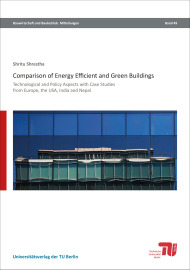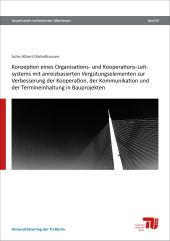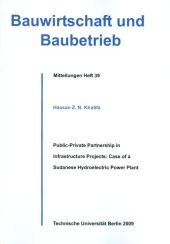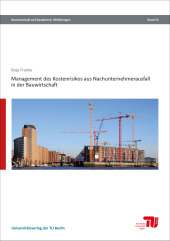Comparison of energy efficient and green buildings
technological and policy aspects with case studies from Europe, the USA, India and Nepal

Format: 14,8 x 21,0 cm
Publishing year: 2016
The adverse environmental impacts from inefficient building construction increase if measures to reduce energy and resource use, through stringent building policies and efficient technology, are not implemented in developed and developing countries. To illustrate a holistic approach to reducing buildings’ energy and resources, the comparison of energy efficient and green buildings in terms of their technological aspects and their policy context in developed and developing countries, mainly in Europe, the USA and India, is presented together with a policy package recommendation for Nepal. A quality review of multiple literature sources, supported by various expert opinions, were the methods used for this in-depth analysis.
It discusses that mandatory building standards, voluntary labels, information instruments and financial incentives are the most effective combination for the shift towards market transformation, that results in a higher share of energy efficient and green buildings. The lesson such as higher compliance with, and enforcement of, building energy standards can be seen in developed countries (e.g. Germany). Looking at a building’s life cycle perspective, it is not sufficient to focus solely on operational energy reduction in higher energy efficient buildings as this is achieved by the increased use of energy intensive materials. Green requirements must be considered in updating building energy standards and labels, particularly for developed countries. Green building certification will also become more effective when the stringency of energy standards is higher and when the whole building life cycle assessment is considered.
Due to the increasing scarcity of energy and resources, many developing countries are forced to face up to the need for holistic green buildings. Although baseline standards are not as high as in most developed countries and national financial support is low, the gradual move towards making the standards more stringent and incorporating the wider scope of resource saving are positive developments in developing countries (e.g. India). However, to achieve significant success, strategies must include the establishment of a suitable funding environment, a political commitment and a strong government vision for long term and sustainable building construction. The challenges faced by Nepal are even greater due to the fast pace of urban growth and the absence of energy and resource efficient buildings policies, highlighting the need for an effective policy package.
Overall, this dissertation demonstrates how energy efficient and green buildings are interlinked. Green buildings reinforced with higher levels of energy efficiency and energy efficient buildings incorporating green requirements are stepping-stones for achieving greater building energy and resource efficiencies. And a suitable policy package fosters its development.



